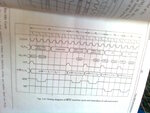Embedded Partner
Full Member level 5
- Joined
- Nov 29, 2010
- Messages
- 247
- Helped
- 42
- Reputation
- 84
- Reaction score
- 37
- Trophy points
- 1,308
- Location
- Hubli(INDIA)
- Activity points
- 2,636
i 8085 microprocessor why the call instuction has highest T states for opcode fetch(i.e,6T states)?
---------- Post added at 05:12 ---------- Previous post was at 05:09 ----------
most of the instructions in 8085 are having only 4T states for the opcode fetch, why for call 6 T states?
---------- Post added at 05:12 ---------- Previous post was at 05:09 ----------
most of the instructions in 8085 are having only 4T states for the opcode fetch, why for call 6 T states?
